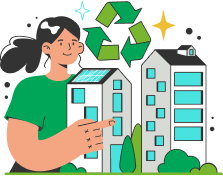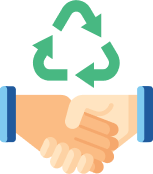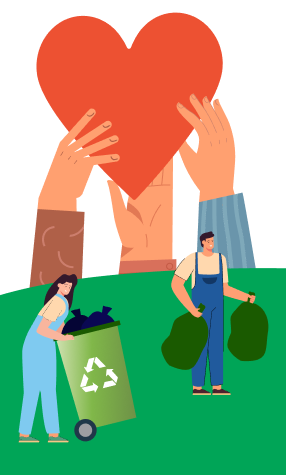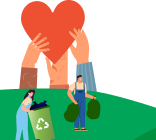Circular
economy
At Vinamilk, the circular economy is associated with the goals of environmental protection and sustainable development, notably the economical and efficient consumption of resources, minimizing and eventually eliminating all types of waste polluting the environment. As a result, in 2022, Vinamilk strived to implement many activities to transform the linear economy to a circular economy, in which efforts were made to convert chemicals into resources, reduce the consumption of input materials and utilize environmentally friendly materials which may be reused, recycled, and easily decomposed in order to minimize adverse impacts on the surrounding environment.
44
Innovations to reduce plastic, save energy and resources
The total value of savings from these initiatives
VND
4,3
billion
CONVERTING WASTE
INTO RESOURCES
INTO RESOURCES
At dairy cow farms, waste treatment is always a top priority to protect the environment. Vinamilk strictly complies and implements waste management and treatment measures and all livestock farms are equipped with a modern, complete and closed waste treatment system. Manure in the barns is automatically collected with manure scraper system operating according to a suitable cycle for the size of each barn. Manure from the scrapers is collected into the closed manure ditch, led to the sumps and pumped to the gathering area. Other organic wastewater sources are also transported to the area for treatment. At the central treatment area, manure is pumped to separators to separate the solid and the liquid from which appropriate treatment methods are applied.
The solid manure is reused by the farm by composting (applied under composting technology from Japan). This composting model converts manure into an organic nutrient source replacing chemicals and inorganic fertilizers and composted organic fertilizers are created with high efficiency:
- Improving soil structure and fertility: increasing nutrient content, providing soil humus, balancing soil microorganisms, increasing water retention capacity, preventing leaching and soil erosion
- Reducing climate change: reducing methane and nitrous oxide emissions from waste decomposition, while reducing the amount of inorganic fertilizers.
• Liquid manure will be undergone an anaerobic treatment at a large-capacity Biogas reservoir in sufficient time to decompose suitable biological compounds, then going through many stages such as aeration, sedimentation, filtration, separation of residue before reusing.• Renewable energy generated from the biogas system is reused for other production stages on the farm: pasteurizing milk for calves, heating water for living demand, drying towels and clothes, drying grass.
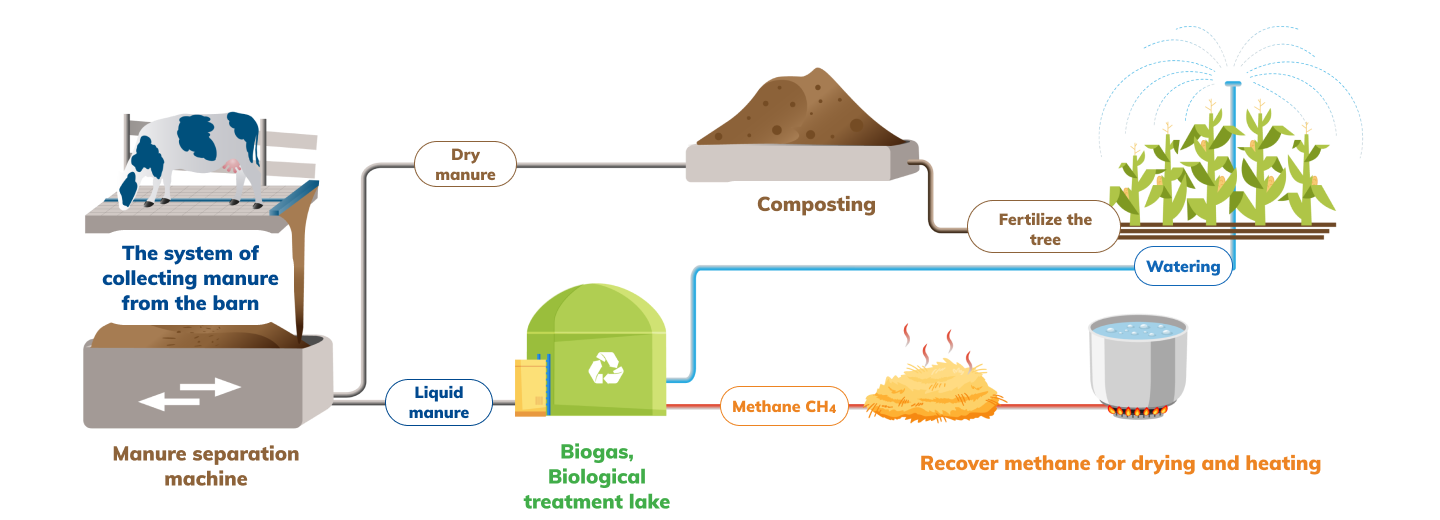

 Vietnamese
Vietnamese
